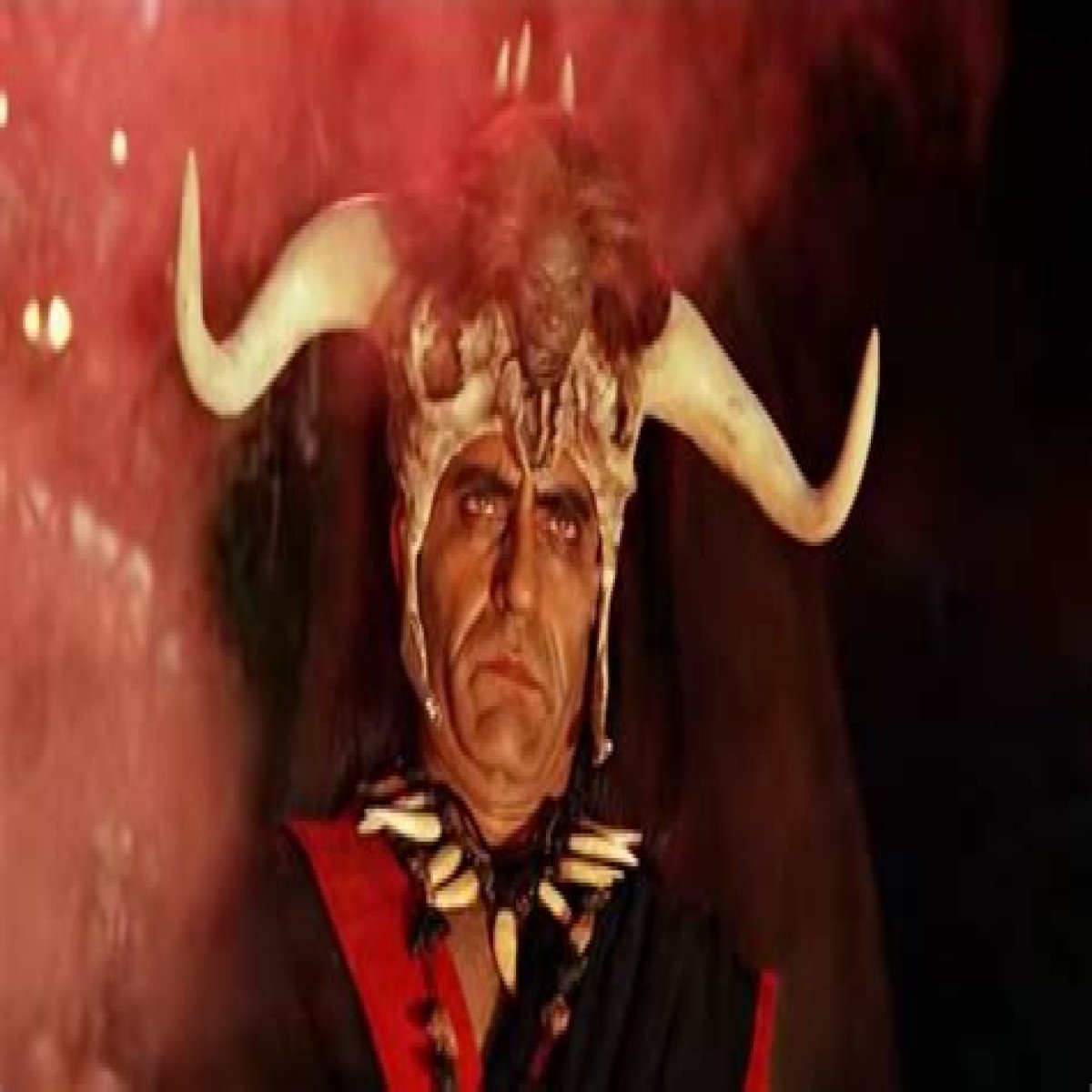So yeah, our three main characters have survived a plane crash, a trip over a waterfall in a big flat inflatable raft, and arrive in a little village where they're informed the inhabitants prayed for a hero to get this magic rock back. Because, when the magic rock was taken, the "wells dried up and the river turned to sand," and all the children went missing.
THAT'S AWFUL! If we take the cognitive dissonance leap to believe that Indiana Jones can speak this remote village's language (there are 1652 languages spoken in India, so ... not likely?), we hear this story via his interpretation and we feel really, really bad for these people. We expect that Indy should too, but is that why he decides to go after the stone? Don't think so! A child escapee of the horror we'll eventually encounter at Pankot brings a piece of cloth into the village that tells Indy the nature of this missing magic stone. Turns out, it's one of the five sacred stones given to Sankara by Shiva, and that's Indy's motivation. It seems like Indy is simply out for fortune and glory, rather than to help the poor impoverished village.
This makes sense, too, in terms of the character arc over the first three movies (we won't even talk about the fourth one). Temple of Doom is actually a prequel to Raiders of the Lost Ark. The dates say it all. Doom opens with a date of 1935 and Raiders opens with a date of 1936. Indy starts off the movie trying to trade an archeological artifact for a big-ass diamond, and he goes after the Sankara stone for what? Fortune and glory. By Raiders, he has respect for old things and thinks they belong in museums, and by Last Crusade he cares about his dad more than the Holy Grail. That's character development, for sure, and shows that the Indy in Temple of Doom is a very handsome, very brave, very charming jerk — the kind of character Harrison Ford excels at.
